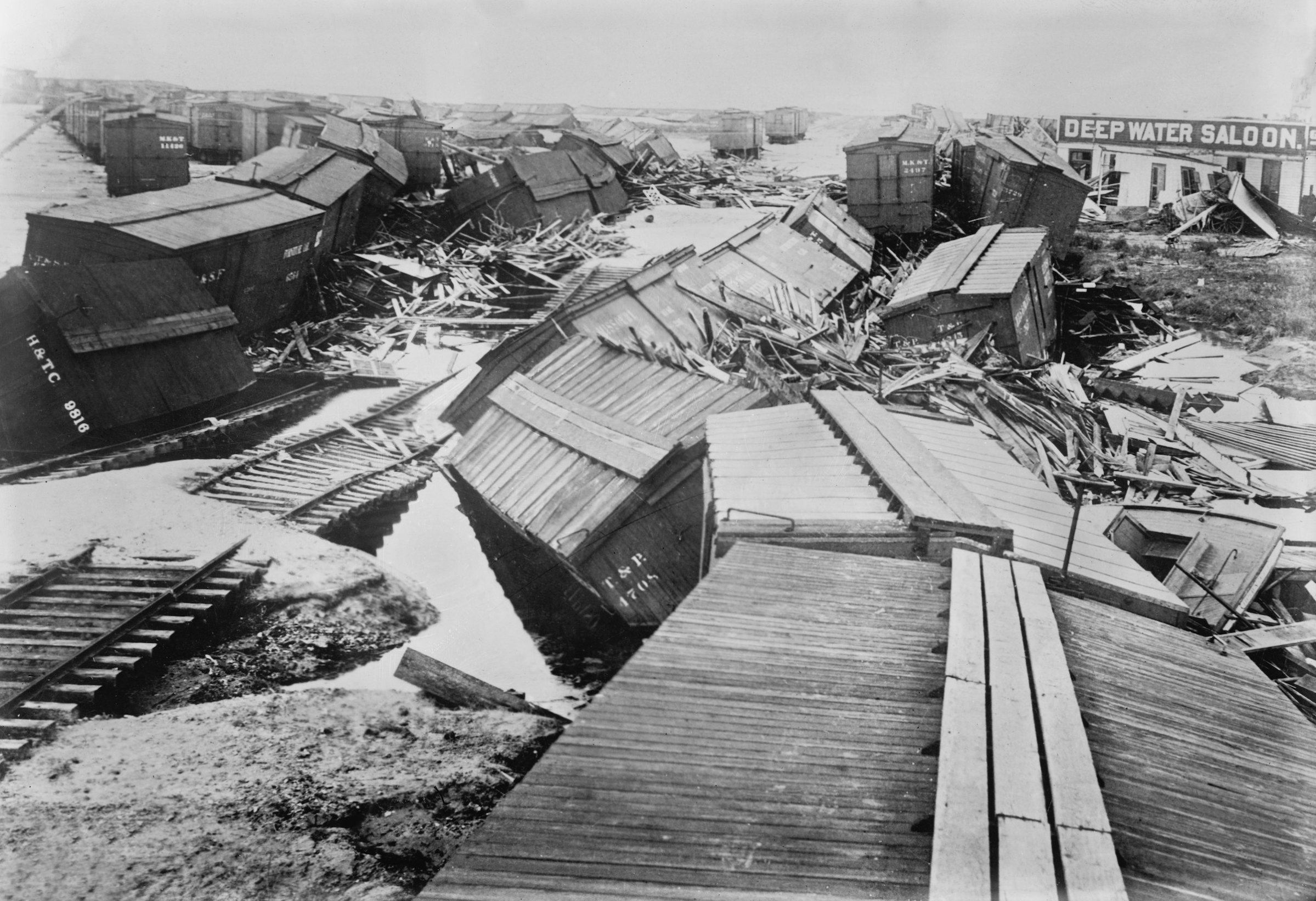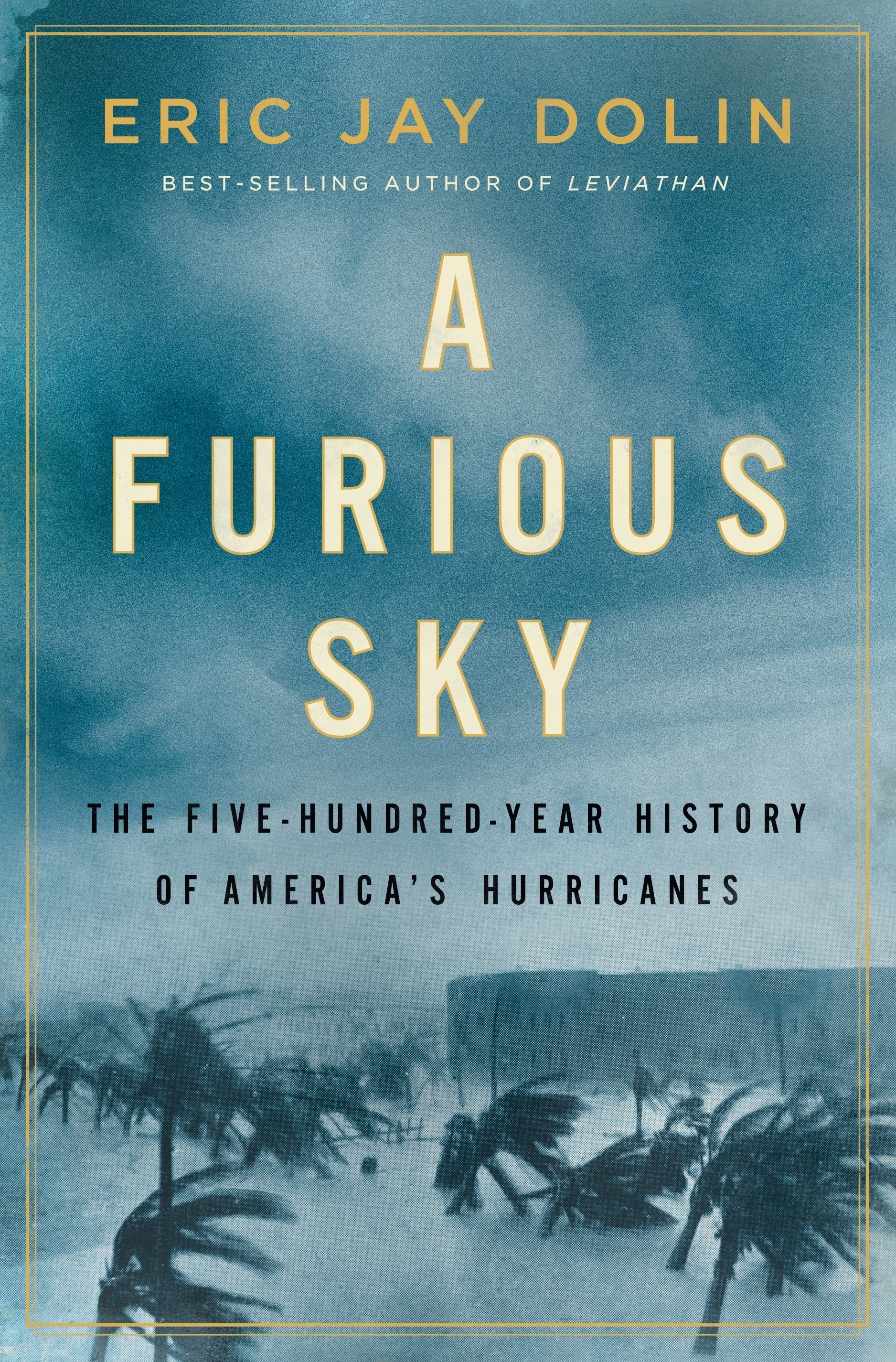
The philosopher and essayist George Santayana once wrote, “Those who cannot remember the past are condemned to repeat it.” With respect to hurricanes, this saying is both wrong and right, depending on one’s perspective. It is wrong in that no matter how much we know about past hurricanes, new ones will always arrive, creating a repetitive history of widespread damage, economic pain and death. However, by remembering and understanding the history of hurricanes we, as a society, can decide how best to respond to the continued barrage that is sure to come from the greatest storms on earth, thereby lessening their impact. Today, as Isaias threatens the east coast with flooding after making landfall as a hurricane on Monday, how we respond takes on an added level of urgency—especially in light of the threats posed by global warming.
In an average year, six hurricanes dance over the Atlantic, three of which are major hurricanes, defined as having sustained winds of at least 111 mph. The number of hurricanes varies from year to year. Fortunately, few of these storms actually make landfall. Typically, two hurricanes hit the United States annually, and a major one pummels the country only about once every two years.
Hurricanes leave behind a trail of devastation. Since 1980 they have accounted for roughly 50% of the cost of all the natural disasters in the United States that exceeded $1 billion in damage. Going back to the late 1800s, hurricanes have killed nearly 30,000 people. And, according to The National Oceanic and Atmospheric Administration, there is a 60% chance that the 2020 hurricane season, which runs from June through the end of November, will be above-average, with six to ten hurricanes, perhaps three to six of them major.
I have long been fascinated by hurricanes, even though my personal experience with them is minimal and not particularly noteworthy, having lived in New England, where hurricanes are infrequent visitors, most of my life. In 1991 I toured the wreckage Hurricane Bob left in its wake on the shores of Cape Cod, and in 2012 I watched the massive waves from Hurricane Sandy pound the beaches and lead to coastal flooding in my hometown of Marblehead, Mass.
Eager to learn more about these storms, I began to research American history’s most memorable, dramatic and destructive hurricanes. These include: the Great Galveston Hurricane of 1900, which leveled thousands of buildings and claimed at least 6,000 lives, making it the deadliest natural disaster in American history; Hurricane Andrew (1992), which cost $27 billion in Florida, and damaged or destroyed 135,000 homes, leaving more than 160,000 people homeless; Hurricane Katrina (2005), which killed 1,800 people and ravaged parts of Florida, Mississippi, Alabama and Louisiana, costing $125 billion, crowning it as most expensive hurricane ever to strike the United States; and Hurricane Sandy, which knocked out power to 8.5 million people, cost $65 billion, killed scores of people, and damaged or destroyed more than 600,000 homes.
Each of these storms was destructive in its own way, and while we cannot stop hurricanes from invading our lives, the tragic history of these storms—the subject of my new book, A Furious Sky—makes it clear that there are many steps we can take to better prepare for and protect against these meteorological wrecking balls.
Get your history fix in one place: sign up for the weekly TIME History newsletter
For example, building codes can be strengthened and enforced so that structures are able to withstand more punishment. Zoning laws can be designed to minimize the placement of structures in areas highly vulnerable to hurricane damage. Effective emergency preparations and evacuation plans can be implemented to give people a better chance of fleeing the storm. Such preparations and plans were a big part of the reason why Hurricane Andrew resulted in a relatively low death toll of 44 in the Sunshine State, despite its great destructiveness.
Individuals can also make their homes and businesses sturdier and more hurricane resistant. The federal government can bolster investment in hurricane-related research to improve the accuracy of hurricane forecasts. Federal, state and local governments can undertake efforts to reduce the loss of wetlands and reestablish ones that have disappeared, so that those wetlands can act as buffers against storm surges by slowing them down and absorbing water. And particularly vulnerable cities can build hurricane protection barriers to reduce the impact of storm surges and flooding. Indeed, Hurricane Katrina would most certainly have been less catastrophic had not 2,000 square miles of coastal wetlands been sacrificed in the name of development, and if the levees surrounding New Orleans had not failed due to a long history of underfunding, as well as serious flaws in their design and construction.
Implementing these and other actions will take high levels of political, bureaucratic and individual resolve, as well as vast amounts of money, all of which are too often in short supply. However, the history of hurricanes provides ample incentive for us to act now. And should we need any more convincing, consider the potential impact of global warming.
A growing number of studies have found strong evidence linking global warming to increased precipitation during hurricanes. Extensive research also predicts that warmer oceans, which provide more heat energy to fuel hurricanes, will make the winds produced by these storms even stronger. Other studies project that in a warmer world hurricanes will linger longer, meaning that affected areas will be pummeled not only by more prolonged winds but also by extended periods of deluging rain.
The long and devastating history of hurricanes can help society make more informed decisions about how to confront what is likely to be an increasingly tempestuous future—if we pay attention. I pray that we do, and that we will be ready for whatever the skies may bring.

Eric Jay Dolin is the author of A Furious Sky: The Five-Hundred-Year History of America’s Hurricanes, available now from Liveright Publishing Corporation.
More Must-Reads from TIME
- Cybersecurity Experts Are Sounding the Alarm on DOGE
- Meet the 2025 Women of the Year
- The Harsh Truth About Disability Inclusion
- Why Do More Young Adults Have Cancer?
- Colman Domingo Leads With Radical Love
- How to Get Better at Doing Things Alone
- Michelle Zauner Stares Down the Darkness
Contact us at letters@time.com